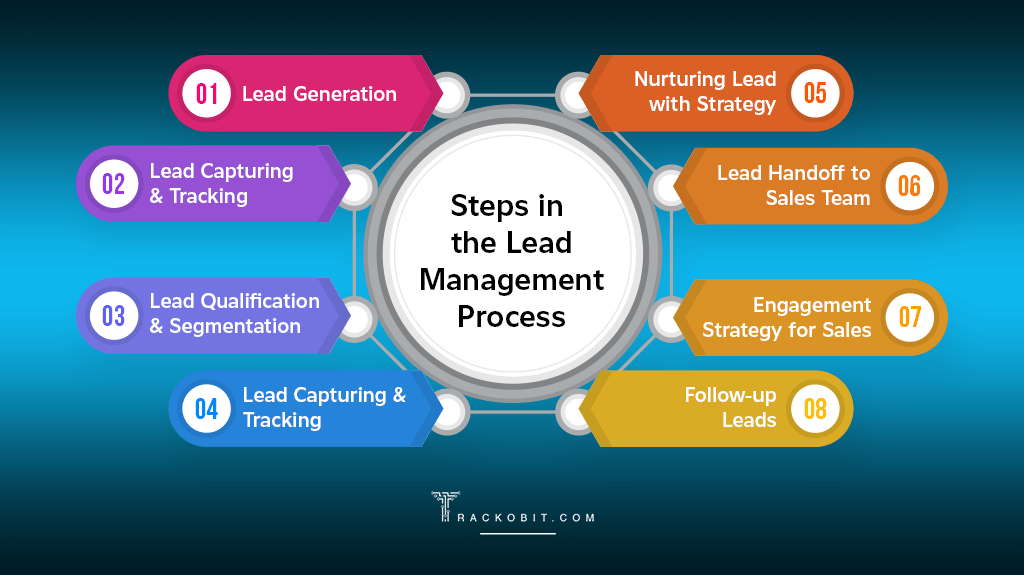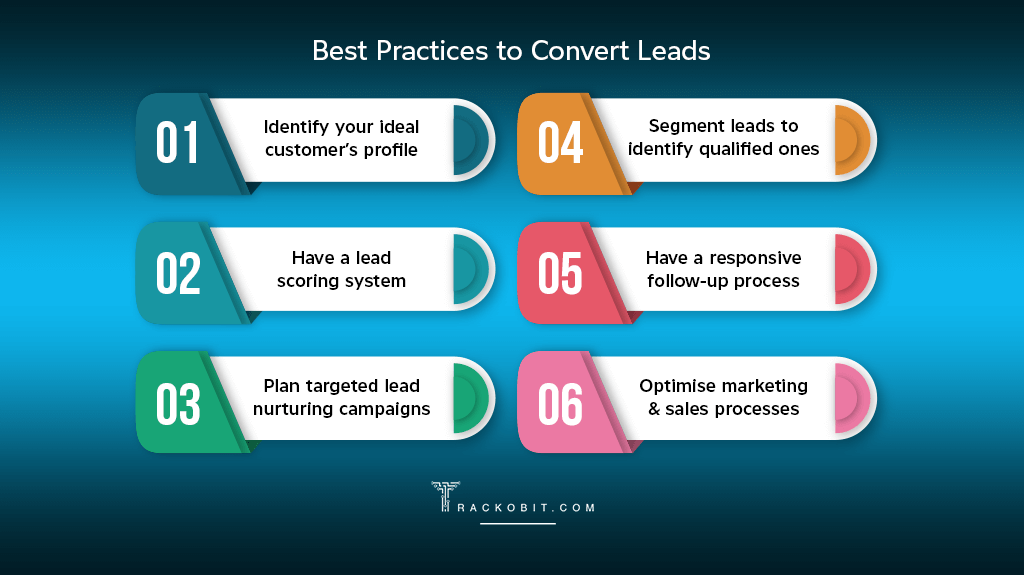-
TrackoBit
Manage commercial vehicles with the new-age Fleet Management Software
TrackoBit -
TrackoField
Streamline your scattered workforce with Field Force Management Software
TrackoField -
Features Resources
-
Blog
Carefully curated articles to update you on industrial trends. -
White Paper
Insightful papers and analysis on essential subject matters. -
Glossary
Explore an alphabetical list of relevant industry terms. -
What’s New
Get TrackoBit & TrackoField monthly updates here. -
Case Study
Explore the cases we solved with our diverse solutions. -
Comparisons
Compare platforms, features, and pricing to find your best fit.
-
About Us
Get to know TrackoBit: our team, ethos, values, and vision. -
Careers
Join the most dynamic cult of coders, creatives and changemakers. -
Tech Support
Learn about our technical support team and services in detail. -
Events
Check out the exhibitions where we left our marks and conquered. -
Contact Us
Connect with us and let us know how we can be of service.
What is Lead Management? Tips to Get Quality Leads for Conversions
- Author:Nandita Gupta
- Read Time:11min
- Published:
- Last Update: December 26, 2025
Table of Contents
Toggle
Lead management works wonders only when you use targeted content, the best lead management tools & some expert tips. Uncover tips to turn prospects into buyers!
Table of Contents
Toggle
Lead management is an art that not all can master. Zero leads, fewer leads, missed leads, or no new leads contacting you — all these are nightmares. If you are seeing these nightmares unfolding into reality, then the following two could be the reason behind that:
- You don’t have that quality sales professional with a clever persona ( no offense, we are not targeting Bob from the sales team).
- You have an improper or old-school lead management process with poor lead segmentation or follow-up process ( again, no offense, but hey, you know that’s true).
When there is an increased inflow of leads, everyone finds it rosy. But the moment the leads start depleting, everyone starts hating it.
Doesn’t matter how great your product and services are, without having an effective lead management process, you cannot sell them. Let’s uncover some expert-tried strategies that will not only help you increase your lead count but will also help increase your cross-sell or upsell.
What is Lead Management?
To simply put, lead management is the process of capturing, tracking, and converting potential leads aka customers throughout the sales funnel. Further, it involves activities like:
- Lead generation.
- Lead qualification.
- Lead prioritization to promote conversions.
Efficient lead handling with a proven lead management system is important to ensure timely engagement with potential clients to further engage them and convert them into actual, long-term customers.
Importance of Lead Management (You Cannot Underlook)
Here is what happens when you prioritise effective lead management:
| Boosts Sales and Revenue | |
| Increases Conversion Rates | When you nurture leads with valuable information, you expand their likelihood of converting into potential customers. |
| Adds Positively to Sales Efficiency | You can easily prioritize high-quality leads. This lets the sales team focus their efforts on the most impactful leads. |
| More Upselling and Cross-Selling | You get to understand the preferences and needs of leads and can find opportunities to recommend relevant products or services. This helps increase your average transaction value. |
| Enhances Customer Experiences | |
| Drives personalized communication | Lead management lets you personalize communication with each lead as per their preferences or stage in the buying journey. |
| Builds trust and relationships | The process lets you timely follow up with potential leads, which showcases your commitment to building trust-seeking and meaningful relationships. |
| Streamlines sales process | Having a well-defined lead management process carves a positive experience for your leads, thereby increasing the chances of conversions. |
| Helps Optimise Marketing and ROI | |
| Tracks lead sources | You can easily look into the marketing that is providing the most qualified leads. Based on this, you can easily optimise your marketing efforts, strategies, and budget. |
| Measures performance | You get access to valuable data with which you can easily measure your marketing and sales performance and build effective strategies accordingly. |
| Improves return on investment (ROI) | Paying attention to high-quality leads and accordingly optimizing the sales process helps maximize return on investment. |
Key Steps in the Efficient Lead Management Process

An effective lead management process is a well-sequenced journey that unfolds from lead creation to lead conversion. Let’s understand that in detail ahead:
Step 1 – Lead Generation
The first step involves identifying the right sources for lead generation. The sources to generate leads could be content marketing practices, inbound marketing, social media platforms, advertising, etc.
You can even generate leads through other outbound practices like going to seminars, expos, or events to interact with prospects and pitch your products/services for further inquiries.
It’s best to use various channels to attract potential leads and motivate them to express their explicit interest in your product or services.
Step 2 – Lead Capturing & Tracking
The next best step is to create dedicated landing pages, forms, or other mediums from where you can collect your prospects’ information. From these mediums, capture essential data of your interested leads like their name, email, phone number, and any other important details.
Step 3 – Lead Qualification & Segmentation
The next step is to implement a lead scoring system that helps assess the quality of each lead and divide them based on variables like:
- Leads Demographics (Whether they are from India, USA, or Germany).
- Leads Behavior (are they there to transact or just gain information)
- Leads engagement – Leads level of engagement to reach towards the end of the sales funnel.
Further, with the help of the best lead management system, classify leads such as cold, hot, or warm based on their likelihood to convert.
Step 4 – CRM Integration
The next step is to use an effective customer relationship management (CRM) system to centralize leads data to interact with them better. Plus, the CRM system helps build smooth collaboration and communication between marketing and sales teams.
Step 5 – Nurturing Leads with a Strategy
Later, you start developing a lead-nurturing strategy to further engage and build relationships with leads over time.
Step 6 – Lead Handoff to Sales Team
Going forward, you establish clear criteria to decide when the lead is ready to be passed from marketing to sales.
Step 7 – Engagement Strategy for Sales
This process involves equipping the sales team with the necessary resources and tools with which they can engage and retain leads. Tools that help personalize sales interactions as per lead’s history, preferences, and needs.
Step 8 – Follow-Up and Feedback
Now you build an effective follow-up system where you track and manage ongoing communication with leads. You generate feedback from the sales team regarding lead quality, conversion rates, and areas for improvement.
Step 9 – Analysis and Optimization
This process involves regularly analyzing the performance of the lead management process. Therein, you optimise workflows, look for any bottlenecks and refine strategies accordingly.
Step 10 – Closed-Loop Reporting
You create a closed-loop reporting system wherein the marketing team shares insights about which marketing efforts made actual sales possible. You use analytical data to continuously refine and improve the lead management process.
Let’s discuss the best lead management practices that maximize the chances of converting leads into customers.
Best Practices for Lead Management (That Drives Conversion)

Here are some proven strategies or ways to positively transform leads from capture to conversion.
1. Identify Your Ideal Customer’s Profile
Effective lead management is incomplete without characterizing your ideal customer. You should frame who your target audience is, based on their demographics, industry, company size, and more suitable criteria. Look for pain points your target customers are facing and how you or your services can help resolve them.
2. Have a Lead Scoring System
You must implement tools with a good lead-scoring system. This system will help you prioritize leads based on their level of engagement or likelihood to convert. There are tools available that help you assign scores according to different actions such as:
- Total clicks or impressions
- Website visits
- Content downloads
- Interactions via email, messaging, or media platforms
3. Gather and Organize Data
Invest in tools that help you record, prioritize, organise, and update data like company information, contact details, etc. Use an authentic CRM (Customer Relationship Management) system that helps you store all lead information safely.
Keep this habit of regularly auditing and updating your CRM data and distributing it within the team evenly, without duplicity. Imagine two sales reps calling to the same leads about a product at different times. Won’t this get annoying for a party on the other side? Sure it would.
4. Explore beyond “Old School”
Ditch the old-school way of attracting leads —”the cold calling”. Your target market expects you to work hard and turn towards more creative methods to lure their attention. Try getting your hands at:
- Pay-per-click advertising with (mind-boggling copy)
- Email marketing (With thought-provoking cross-sell or upsell opportunities)
- Content marketing (Where every content platform holds prospects’ attention)
- Social selling (get yourself in that Facebook group)
- Webinars (channel your subject matter expertise)
- Offline events (yes, promote those in-store visits)
5. Do Effective Lead Segmentation
Develop a lead scoring system where you segment lead quality based on factors like engagement level, demographics, or maybe their buying intent. Having that will help land leads of high quality. Additionally, this will help you personalize engagement with customers and improve conversion rates.
6. Effectively Communicate (responsive lead follow-up)
Promptly respond to leads whose interest is high or fresh in your products or service offerings. Sit back and implement an effective lead response strategy that will help keep your prospects longer and interested in the loop.
🔍 Whenever your inbox receives any lead, make sure to quickly and efficiently respond to it within the first 24 hours. Delaying it can increase your chances of losing this prospect.
Also, try to avoid generic templates and personalize your communication based on individual lead needs and pain areas.
| 💡Lead Follow-up Template – That Gets Fast Replies!
Hi (Prospect’s First Name), Hope you are doing well. Thank you for your time, just want to know how you would like to move the conversation ahead regarding our (product_name). Kindly suggest how you want to pursue this conversation so that we can quickly work toward understanding your requirements. Looking forward to your response, (Your_name) |
Also, prefer going for multi-channel engagement. Leverage diverse communication channels like email, and social media to reach leads where they are most active.
7. Plan Targeted Lead Nurturing Campaigns
Make sure to develop effective campaigns to nurture leads to push them through the sales funnel. You can implement:
✔Automated email sequences, where you send emails to users in sequence based on their actions. Like emails to sign up for an email newsletter or maybe completing a purchase for an item left in the cart.
✔ Drip campaigns, where you automatically send a limited number of emails to your audience based on actions they take.
✔ Provide targeted content as per your unique buyers’ goals, interests, or marketing triggers.
✔ Offer a mix of content like blog posts, whitepapers, direct mail, or interesting calculators. Imagine if your prospects are looking for field staff tracking, giving them a route distance calculator will be a very good deal.
8. Optimise the Marketing & Sales Processes
Sometimes it’s the sales process that needs fixing. It’s best to establish a clear and documented sales process with pre-defined stages and responsibilities. Yes, it’s time to sit with Bob from the sales team to make some adjustments.
Also, foster a smooth collaboration between sales and marketing teams, ensuring quick lead handoff. Additionally, leverage automation tools that help you simplify redundant or boring tasks like email scheduling, lead scoring, or chunky data entries. This will help free up your time for more personalized interactions with potential customers.
9. Measurement and Analysis
You must gauge the metrics important to understand the progress. Plan and analyze metrics like lead conversion rates, sales cycle length, marketing ROI, etc. Doing this with the help of lead management tools will let you identify areas of improvement and make effective lead engagement strategies.
| 👍 Additional Tips to Attract And Nurture Qualified Leads!
—> Provide sales CRM training to the team about its end-to-end features or functionality. Teach the team how they can effectively utilize the CRM system to get the most from it. —> Don’t explore customer queries just to make quick sales. Build robust relationships with clients. Seek meaningful conversation to win their trust. —> Openly ask for feedback from customers and prospects about their needs and approaches. This will help you alter your lead management approach. |
Top Lead Management KPIs – “Metrics to Gauge”
The lead management process is a waste if you don’t set up Key Performance Indicators (KPIs) to analyze leads’ effectiveness to convert. Here are important lead management KPIs that you must track to increase lead numbers, lead quality, and experience ultimate sales.
| 1. Lead Conversion Rate | This KPI measures the percentage of leads that are successfully converted into customers.
Lead Conversion Rate Formula —> (Number of converted leads/Number of total leads) * 100 |
| 2. Lead Velocity Rate (LVR) | LVR defines the positive growth rate of your leads from month to month.
LVR Formula —> [(Current Month’s Leads – Previous Month’s Leads) / Previous Month’s Leads] * 100 |
| 3. Lead-to-Customer Ratio | It helps identify how many leads are needed to convert at least a single customer.
Lead to Customer Ratio Formula —> Number of customers acquired / Number of total leads |
| 4. Sales-Qualified Leads (SQL) Ratio | This ratio helps in measuring the lead’s quality that’s passed from marketing to the sales team. It defines how many leads match the parameters of quality leads– shared by the sales team.
Sales-Qualified Leads (SQL) Ratio Formula Number of SQLs / Number of total leads |
| 5. Lead Source Effectiveness | Helpful for tracking the sources of the leads – is it from social media, website, or referral?
This KPI helps access platforms where your prospects are generating the most qualified leads. |
| 6. Time-to-Conversion | This KPI defines the average time to move quality leads throughout the entire sales funnel — to convert into a customer.
The shorter this cycle is, the more it signifies how effective the lead management process is. |
| 7. Cost per Lead (CPL) | This KPI measures how much cost was incurred behind each lead. It helps look for ways to optimize marketing budgets and strategies.
Cost per Lead (CPL) Formula Total cost of marketing campaign / Number of leads generated |
| 8. Lead Engagement Metrics
|
This KPI helps monitor metrics like successful open rates, click-through rates, and engagement rates over emails, social media campaigns, and other communication channels.
High engagement metrics signal high interest and likelihood of potential conversion. |
| 9. Lead Funnel Drop-off Rates | This metric helps analyze where your leads are backing out in the sales funnel. It helps identify and address any bottlenecks or issues in the lead issues or bottlenecks in the lead nurturing and conversion process. |
| 10. Customer Lifetime Value (CLV) | The total revenue a business can expect to earn throughout their entire customer relationship.
CLV helps estimate the long-term value of acquiring and retaining customers. |
Difference Between a Lead and a Customer – How Do They Differ?
| Basis | Lead | Customer |
| Meaning | Individuals engaging with marketing content for more product and service awareness. | An individual who ends up purchasing the product or service. |
| How it’s Acquired? |
|
|
| Sales & Revenue Possibility | Possible through ad campaigns, product demos, or free service trials. The chances of converting are 5-20%. | Repeat purchase, subscription renewal, cross-selling, or upselling. |
Here’s Your Final Takeaway!
Lead management is a crucial process of capturing, tracking, and nurturing potential customers into actual customers with effective lead nurturing campaigns. The lead management process isn’t flawless up until you focus on targeting personalised and valuable content that addresses your prospects’ needs throughout the sales funnel.
The above best practices are tried and tested by top-tier brands and have been helping them create a more efficient and effective lead management process, which leads to higher conversion rates and adds to customer satisfaction.
In case you are failing to obtain leads, it is time the optimise the existing process and create campaigns that nurture stronger relationships with potential customers. Always remember that lead management is an ongoing process, so don’t stick to one single approach. Simply go for the trial and error method continuously and refine your approach based on data and results.
Have a sales staff with continuous orders or customer service requests? Looking for a centralised platform that can help streamline all? Try TrackoField’s scaling lead management software to make the sales order management process a breeze.
FAQs on Lead Management
-
What is lead management?
Lead management is the process of engaging, nurturing, and converting leads or prospects into actual buyers. The process involves the use of effective lead management tools and methods that help retain the attention of users.
-
What are the types of leads?
Following are the popular types of leads that you witness throughout the product-selling journey: 1. Cold Leads - Ones that fit the ideal customer profile but don’t show any interest in buying the product. 2. Warm Leads - Ones who are aware of your name, and presence in the market, maybe by following your blogs or social media. They are easier to convert than cold leads. 3. Hot Leads - These are the ones who reached out to you, maybe for a demo or casual consulting about a product. Turning them into prospects is not that hard. 4. Information Qualified Leads (IQL) - Someone seeking a solution to their problem statement and landing up their product page as a solution to their query. 5. Sales Qualified Leads (SQL) - Yes, finally, someone ready to meet your sales team for an enterprise price plan (phew, good job, marketing team).
Nandita is the Team Lead for Content Marketing at TrackoBit, bringing over a decade of experience in B2B, B2C, and IoT sectors. She has a proven track record of helping Read More
Related Blogs
-

Grameen Credit Score: Everything that NBFCs and MFIs Must Know in 2026
Shemanti Ghosh January 6, 2026Empower the underserved Joint Liability Groups (JLG), Self-Help Groups (SHG), and residents of rural India with better credit assessment and…
-

How MFIs Are Working In Modern Day Scenario? A Complete Breakdown
Mudit Chhikara December 30, 2025How field force automation is helping MFIs transform field operations.
-

Unified Field Workforce Dashboard: Monitor Tasks, Attendance & More In One Place
Mudit Chhikara December 15, 2025Bring full clarity to field operations with a single, real-time field workforce dashboard.
-

Loan Disbursement in NBFCs: From 15 Days to 3 Minutes – Learn How
Shemanti Ghosh December 11, 2025TrackoField’s AI-enabled field force automation software speeds up loan disbursals in NBFC with field agent task monitoring and facial attendance…

Subscribe for weekly strategies to boost field team productivity.
Your inbox awaits a welcome email. Stay tuned for the latest blog updates & expert insights.
"While you're here, dive into some more reads or grab quick bites from our social platforms!"Stay Updated on tech, telematics and mobility. Don't miss out on the latest in the industry.
We use cookies to enhance and personalize your browsing experience. By continuing to use our website, you agree to our Privacy Policy.

































